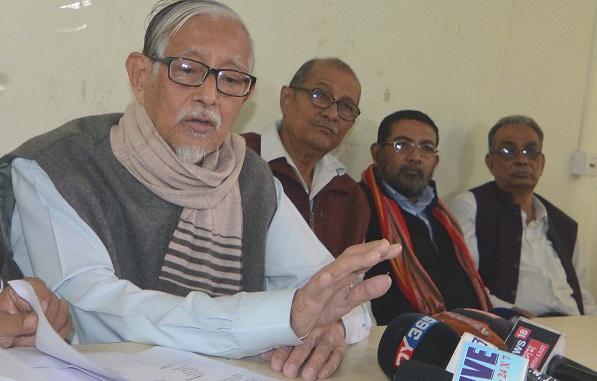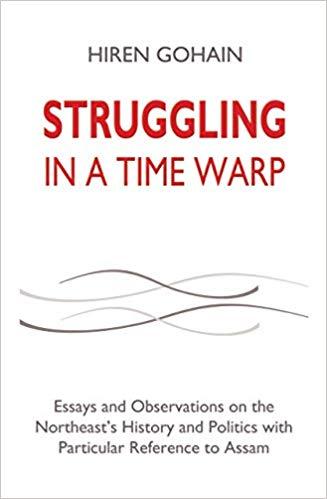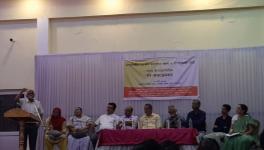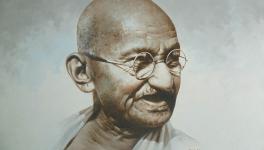Shadowy Corner: Fifty Years of History and Politics of the North-east

Hiren Gohain, a well-known literary critic in Assamese literature and commentator on society and politics, has been an observer and commentator on affairs in Assam and the North-east for several decades. He has been deeply engaged with the region and with its dimension of conflict, violence and serious unrest, aspects of the region that are only vaguely known and very little understood in the rest of the country.
Struggling in a Time Warp, Gohain’s latest book with the subtitle Essays and Observations on the North-east's History and Politics with Particular Reference to Assam, has recently been published by Bhabani Books, Guwahati.

The book contains a selection of essays written by him and published in a variety of journals including the Economic and Political Weekly. It also features some of the lectures that he has delivered at institutions such as Jawaharlal Nehru University and the Nehru Memorial Museum and Library in New Delhi. The essays cover nearly half a century of North-east India’s history, society and politics.
“These essays might help throw some light on a shadowy corner of the country and its various discourses, in particular its inclusion of narratives and commentary on Assam’s anti-foreigner movement, the ULFA episode, conflict and tribal unrest,” says the author.
Here is a brief extract from Struggling in a Time Warp:
Prologue B
Looked at closely, the Northeast turns out to be a rather tenuous concept, justifiable only on grounds of geography and state policy. During long centuries when the greater part of the country had been brought together under great empires prior to colonial rule, the region remained at the margins, open to their cultural currents but politically and economically beyond the pale. It was colonial rule that, whether one likes it or not, brought it within India politically. The great waves of the freedom movement also rolled over the plains of the region in consequence. The Northeast has taken shape under the shadow of events of such magnitude.
It is the common habitat of numerous and diverse ethnic groups identified to be of Austric, Indo-Aryan, Dravidian, and the most specific, Mongoloid descent, and they had all been caught up in the turbulent process of advent of modernity under the aegis of an aggressive colonial power. The policies and the practical interventions of the colonial power played a decisive role in bringing the region to its present shape, but the successor state, independent India, built on those foundations to inaugurate an era of popular government and its benefits as well as as contradictions. Development nurtured aspirations as well as fissures, which are very much a part of the present politics of the region. It is now home to eight separate and distinct states though the latest member Sikkim does not share much of the history mentioned above, and there is some possibility of yet newer states being carved out of the region. The fact that the boundary question is still live among them indicates the haste in which some of them had to be constituted in response to popular passions.
However, there has not been a clean break with the past with the departure of the colonial power. Apart from the visible traces of tribal culture, there are vestiges of, and certain continuities with, the colonial past, and it is important to examine them so as to be aware of their repercussions for the present.
When the British in the heyday of their empire-building—a time when “annexation” was a declared policy of the imperial government for some time—entered the region, they found the different native societies in various stages of development. Arguably Assam was the most structurally developed territorial state they came upon, though various tribes were not all assimilated to one homogenous political society yet, and the state itself retained many tribal features at the base. Social development had proceeded farther there towards some form of Sanskritization than in many other areas. Further, undivided Assam up to the second decade after independence covered most of the tracts that later became separate states, such as Meghalaya and Mizoram. Political awakening among different ethnic groups, by and large known as “tribes”, taking place at different times makes a fascinating story.
Besides, the outcome of accelerated economic, social and political developments following India’s achievement of independence, brought to the surface many subterranean contradictions which are the stuff of the region’s history since then. The relations among the different tribes, peoples and states, and those between the centre and the states, and those between are integral chapters of this history.
The contents of this section consist of both attempts to present some overviews with general features and occasional focus on significant events and developments.
Hiren Gohain is a literary critic and commentator on socio-political issues.
Author's note: I regret very much that owing to an inadvertent error, a map purported to be that of Assam in 1951 in my book Struggling in a Time Warp [Bhabani Books, Guwahati, 2019] is actually from a much earlier period. The oversight will be corrected in future reprints.
Get the latest reports & analysis with people's perspective on Protests, movements & deep analytical videos, discussions of the current affairs in your Telegram app. Subscribe to NewsClick's Telegram channel & get Real-Time updates on stories, as they get published on our website.
























